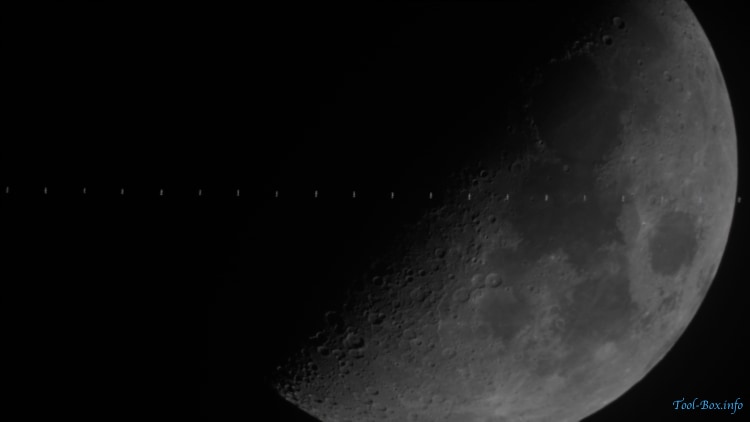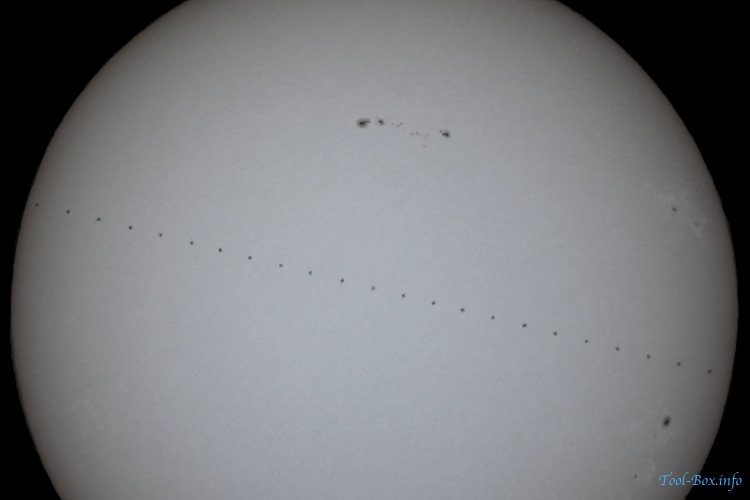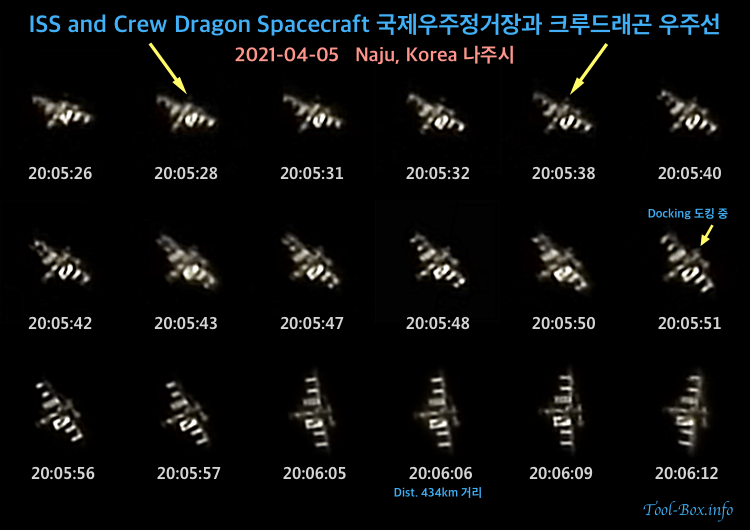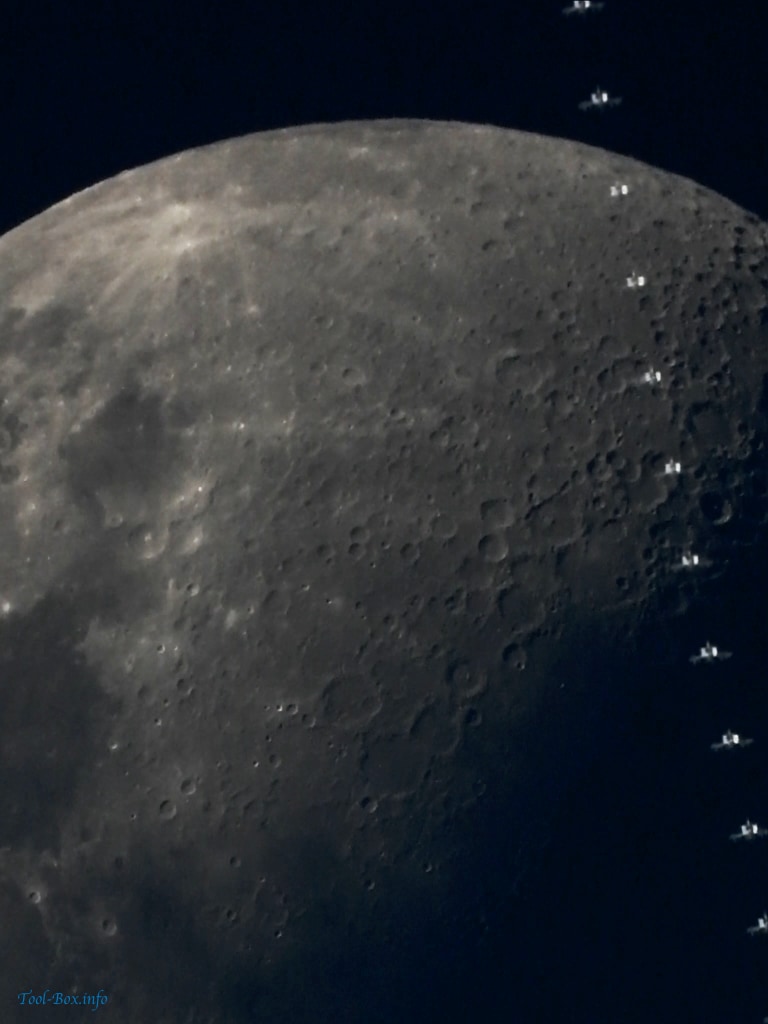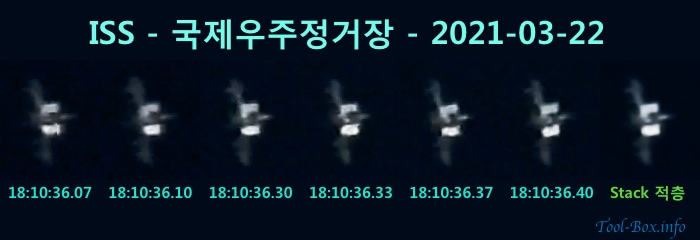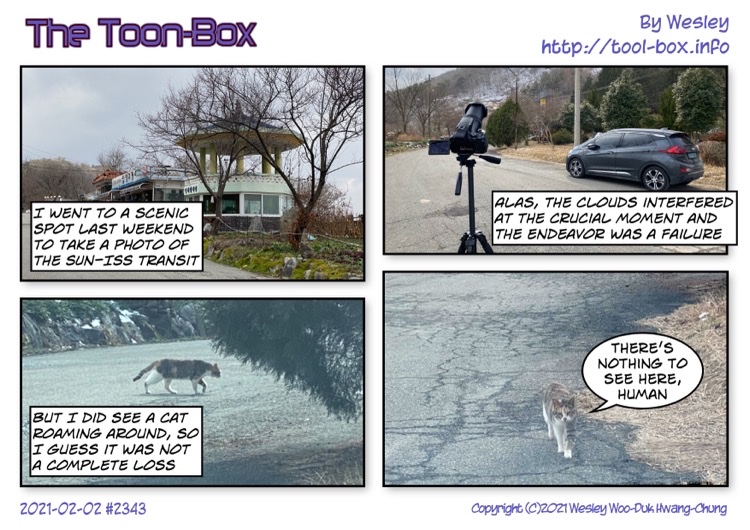Tiangong Space Station seen in day and night
Posted by Wesley onTiangong is a Chinese space station which was initially launched on April 29, 2021. It is built upon the experience gained from its preceding prototypes, Tiangong-1 and Tiangong-2. It only has the core module (Tianhe) at the moment, but two additional modules (Wentian and Mengtian) are planned to be added this year. Because Tianhe is much smaller and simpler than the ISS, I wasn't sure what to expect when photographing it. Once I did catch it crossing in front of the Moon, I noticed that it looked longer and resembled a candy in a wrapper. That was due to the cargo spacecrafts Tianzhou 2 and Tianzhou 3 docked to the ports.
To see the solar panels on the space station and the spacecrafts, I needed to observe it crossing in front of the Sun. Fortunately, a sighting opportunity took place just two days later and I was able to get a good look. Both the large panels on the core module and the smaller ones on the spacecrafts were visible.
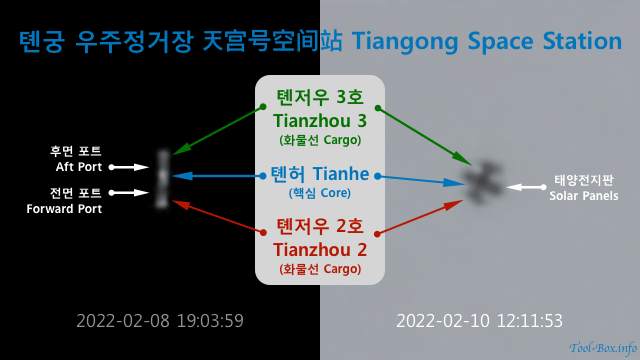
With the shots zoomed in and stacked, you can see the individual parts more clearly. The length of the object is about 38 meters (Tianhe: 16.6m, Tianzhou: 10.6m each), which came out to be about 30 pixels long when I shot it on February 8 at 413km away. This is roughly 1/3 the size of the ISS. If there were no spacecrafts docked, it would have looked much smaller and less distinct. On February 10, it was 576km away, so it came out to be smaller at about 20 pixels. I may be able to get larger Sun-crossing shots in Summer when the maximum altitude of the Sun is higher.
Device: Nikon P1000
Settings: 3000mm - f/8 (ISO 800 - 1/800s / ISO 200 - 1/1250s)
Filters: None
Time: 2022-02-08 19:03:59 / 2022-02-10 12:11:53 KST
Location: Haenam / Gangjin, Korea
20 / 23 video frames processed with Pixelmator Pro 2.3.5
10 / 14 video frames stacked with RegiStax 6.1.0.8
Defined tags for this entry: astronomy, camera, China, Nikon CoolPix P1000, satellite, space station, Tiangong
